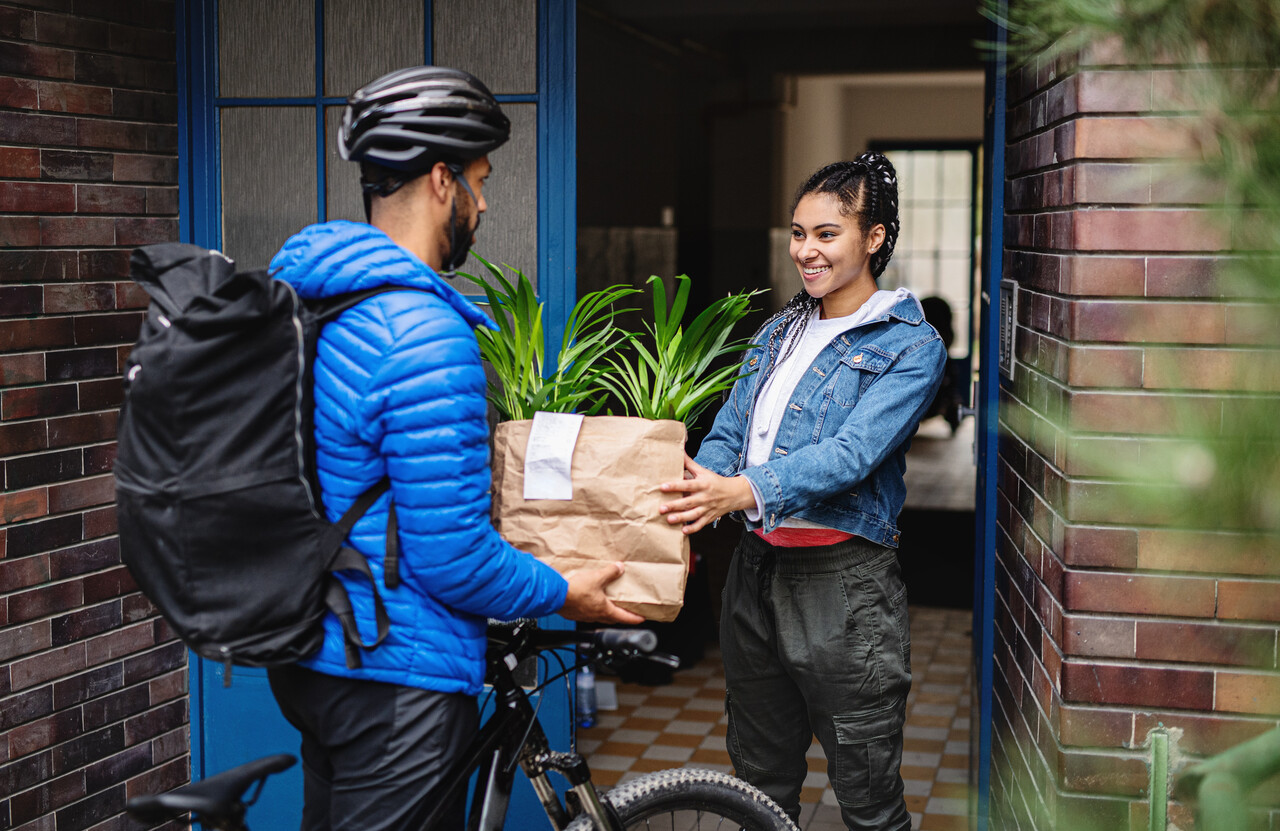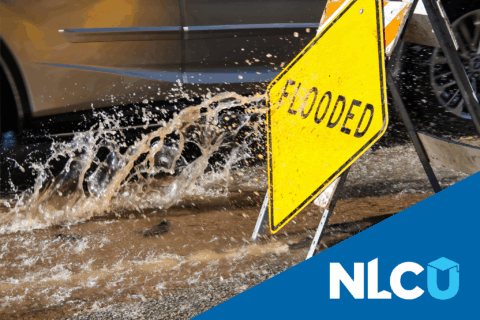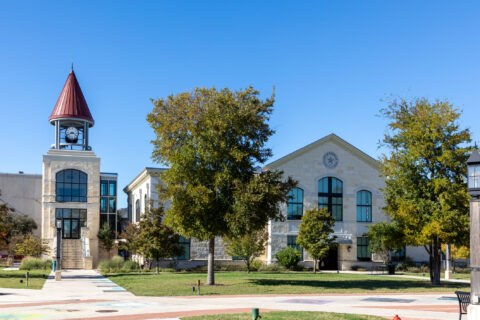Delivery fleets are mainstays on our streets, and they aren’t going away anytime soon. With shifts towards blended physical and digital retail, more communities are grappling with how to manage the increased presence of delivery vehicles. In many cities, leaders have already taken action to improve local infrastructure and reduce emissions and congestion. At NLC’s City Summit in Atlanta, attendees heard from four speakers who shared examples of implementing electric fleets, delivery robots, and other technologies in their communities to decarbonize the delivery of goods. Here are some of the key takeaways from the session.
The newest report by NLC’s Future of Cities initiative analyzes modes of decarbonization and explores their best use cases and potential challenges, highlights specific regions that have made significant strides to enable delivery options with low or no emissions.
At the local level, increased traffic and idling – whether from delivery or trips to the store – can create pollution and negative health impacts. Unfortunately, due to inequitable development in some cities through practices like redlining and location of highways, people of color are often disproportionately harmed by traffic congestion. It is important to pay attention to these disparities and embrace solutions that facilitate safety and good health for residents.
Cities, towns and villages can catalyze change through the decarbonization of delivery by encouraging the transition from carbon dioxide-emitting delivery vehicles to electric delivery technologies. These technologies include electric trucks and vans, cargo e-bikes, delivery robots, and aerial drones.
Councilmember Chelsea Byers from West Hollywood, CA, spoke about a pilot program to introduce Personal Delivery Devices (PDDs), or delivery robots, to her city. The introduction of PDDs supported city priorities like increasing new electric-powered vehicles and reducing car trips, tailpipe emissions, traffic congestion and parking congestion. The pilot program began in 2020 and has grown to 20 PDDs. The program has supported more than 33 merchants in West Hollywood to meet their customers’ needs.
Nico Larco, Professor of Architecture and Urban Design at the University of Oregon, also shared his experiences working with several cities to implement PDD pilot projects. These pilot projects were exploratory: the goal was not to categorically determine if the technology is good or bad, but rather to learn more about it. They found that public response to PDDs was positive and there was a lot of curiosity about the technology. The pilots also revealed that incomplete or deteriorating pedestrian infrastructure poses challenges to operating PDDs.
We have to think about cascading impacts. Just because emerging technologies solve one problem doesn’t mean they solve everything around it. We must consider: is this the most efficient way to accomplish a goal?
Nico Larco, Professor of Architecture and Urban Design
Effectively managing traffic at the curb is another pathway to improve delivery efficiency and reduce congestion and traffic-related injuries. Municipalities interested in reworking their curb space, especially to lower emissions, can first gather data on how the curb is currently being used and ultimately design a tailored, effective curb policy.
The City of Gainesville, FL, worked with the University of Florida to implement some of these curb management tools. Commissioner Cynthia Chestnut, spoke about Gainesville’s smart curb project to evaluate uses of curb space and maximize efficiency and safety. Commissioner Chestnut also spoke about Gainesville’s work testing autonomous shuttles, deploying automated pedestrian and bicycle detection, and implementing a micromobility program. The city’s partnership with the University of Florida has allowed them to test many innovative mobility solutions.
Partnerships with private companies and academic institutions will be critical to run pilots and develop new innovations to solve real-world problems. Pooling resources like funding and subject matter expertise can expedite timelines, expand the scope of projects and make municipalities more competitive for certain grants.
The final speaker of the session, Adam Raphael, shared Amazon’s work to decarbonize delivery in partnership with communities – since 2022, Amazon has rolled out more than 10,000 electric vehicles in more than 1,800 municipalities across the US. To encourage fleet electrification, he advised that cities build relationships with local utilities, prepare for future demand, and streamline permitting to encourage construction of commercial EV infrastructure.
Cities have an important role to play in the electrification journey. [They] will be the ones responsible for deploying the infrastructure necessary for both personal vehicles and commercial fleets. Some cities are also considering the electrification of their own municipal fleets.
Adam Raphael, Senior Manager, Amazon
Delivery can be made more sustainable through innovative solutions, intentional policies and collaborative partnerships with companies and academic partners. Municipalities can make a real impact on the delivery sector, tackle local environmental challenges and ensure that city infrastructure can support deliveries, commuters and pedestrians alike.
As more technology comes to market to make both online and in-person shopping experiences seamless, cities will be leading the movement toward responsible delivery that neither compromises resident safety nor quality of life.
To learn more about electric delivery technologies, curb management strategies for more efficient delivery, and ways of encouraging fleet electrification, read the full report here.
Learn More
To learn more about electric delivery technologies, curb management strategies for more efficient delivery, and ways of encouraging fleet electrification, read Decarbonizing Delivery of Goods Municipal Action Guide.








